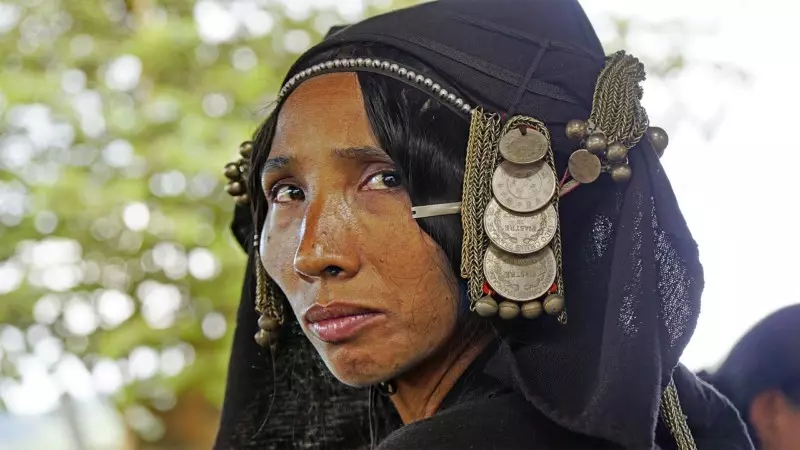July 17 - Ethnographer Day. Science Ethnography is beautiful in that the memory of human shortness and tend to invent the Vedic wisdom and dairy rivers with fermented banks, it stands to her a little bit out of sight of the past. Ethnography with merciless meticulousness explores and tells us how traditionally peoples live and lived, without giving humanity to stick in the sweet illusions about the golden eyelids instead of going forward.

Today we decided to recall the five steep and important for the science of female ethnography (well, today it is possible in the title!)
Olga Petrovna Semenova-Tian-Shanskaya
The famous Russian traveler and geographer Peter Petrovich Semenova Tyan-Shansky had four sophisticated son. But to the earliest (in incomplete forty of illness), no one knew the death of his daughter that she would also enter the history of science.Olga Petrovna lived the lives of the old Virgin and had a very unusual hobby. She circled Russian villages and led a diary of observations, describing life, customs, the relationship between Russian peasants scrupulously and methodically, linked to every little thing.
These unique, valuable entries were discovered and published by her friends, and Olga Ga Petrovna's right earned his historical glory as a researcher and one of the origins of Russian ethnography.
Alice Fletcher
At the end of the nineteenth century, the incredible popularity of the work of the lady named Alice Fletcher was incredible. In general, the penetration of women into ethnography produced a coup in science, showing how much it was hidden from the eye researcher-man: customs and rites associated with the birth and raising children, sexual life, female health, death, cooking, treatment ... We can say that Before communicating with women of different nations (often impossible for foreign men), most of their daily life remained invisible to the European Researcher.
Alice went further conversations with representatives of the Indian tribes (it was her who she studied), for many years he plunged into their environment until their customs and following their habits in everyday life, while Siou had lived among the representatives of the SIU's tribe. Fletcher is considered the first researcher who managed to spend so deep and long observation of the people.
Margaret MID.
The young American woman became famous in the twenties, published a study of Polynesian morals, reflecting, in fact, the position of her supervisor Franz Boas. According to his theory, youth unrest in Europe and America were associated with sexual frustration, restrictions on young people in sexual life. According to the observations of the Ministry of Foreign Affairs on Samoa (short and metering), among the Polynesians, there were no such prohibitions among Polynesians and, due to the conflicts of generations, did not exist.Its studies were refuted in the eighties, but still the Foreign Ministry managed to contribute to ethnopsychology, albeit less attached to the general public. According to the results of their further research, it allocated three directions of the transfer of knowledge between generations: from the older to the youngest, from the youngest to the older and, finally, between peers.
It is difficult to imagine, but before it is about the fact that the directions of three, n who did not think, and if the transfer of knowledge is not from the older to the younger, then as a kind of perversion and exclusion from the rule.
Ruth Benedict.
One of the teachers of the Foreign Ministry, Ruth Benedict, is literally legend ethnography and anthropology.
First, it was she who developed and introduced a scientific methodology for studying culture at a distance in cases where you can not immerse yourself in it (the historians helped it very much).
Secondly, she studied for a long time than traditional cultures are different from another, which makes each of them separate, and not by variation, and developed the concept of ethos, the rod of the culture that makes it unique with all attributes similar to neighboring cultures or borrowed from other Civilizations.
Inga Andronikova
Gypsies, one of the most scattered and omnipresent peoples, have long and constantly caused interest, but he was extremely distant from truly scientific. They were looking for projections of their romantic and mystical aspirations or, on the contrary, their own fears. Until recently, Tsyganov was, despite the prevalence of the people himself, a very sick direction in ethnography.
One of the outstanding research of life, believes and unusual oral folklore Roma (in particular, Russians) was the Soviet girl Inga Andronikov. She was in the gypsy families, managed to catch the nomads on his wear and leave many records about the nomadic life device before the memory of him had disappeared almost completely.
Unfortunately, its records were discovered and systematized a lot later than her death. They denied many popular myths around the life of the life and society of the Gypsy people and recorded the information that could leave forever.
Illustration: pixabay.com.
